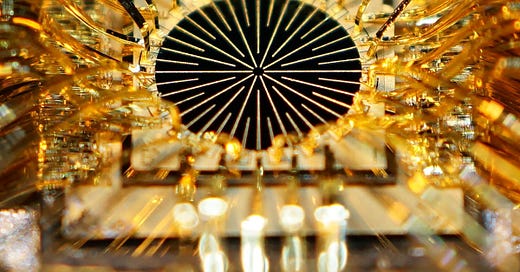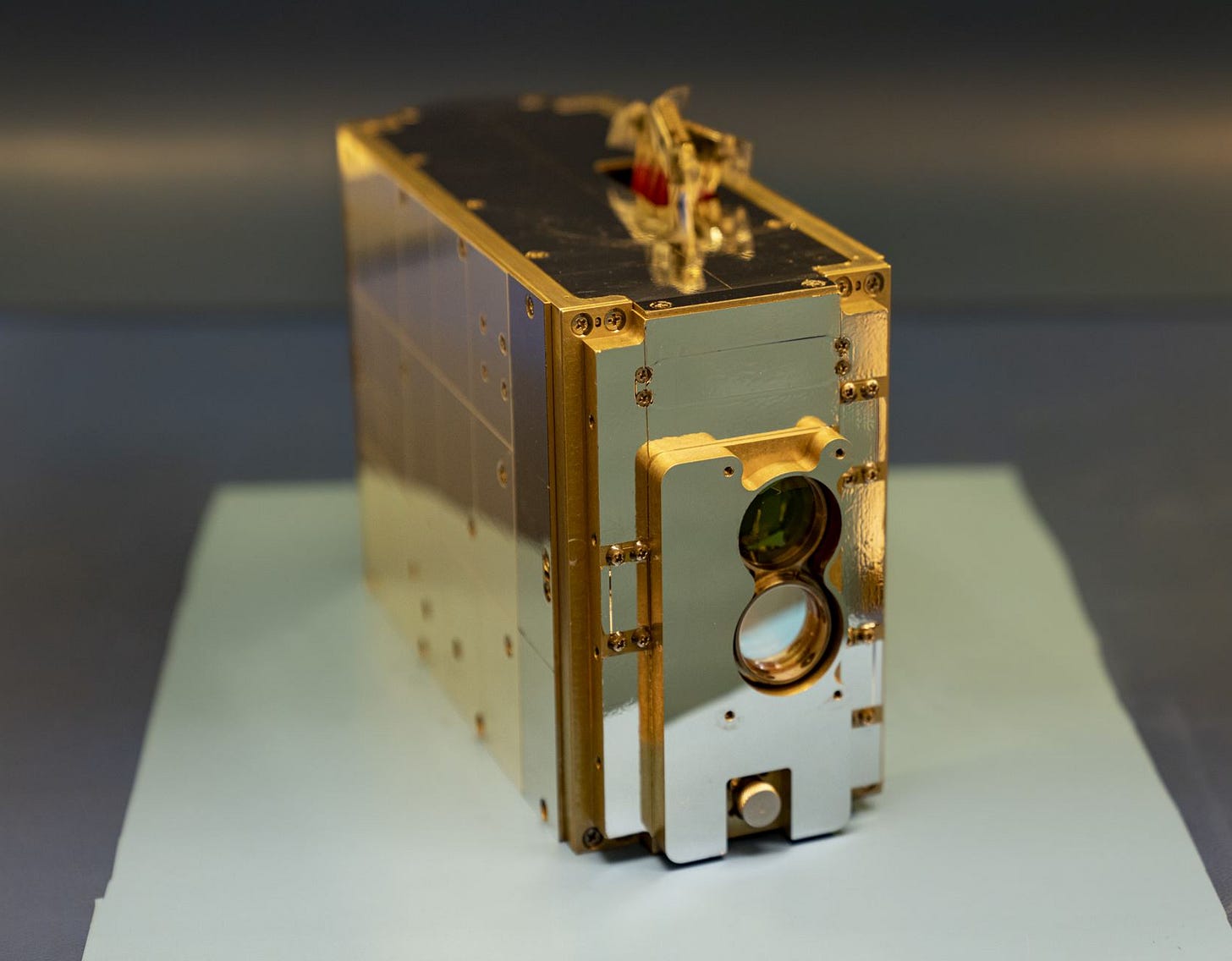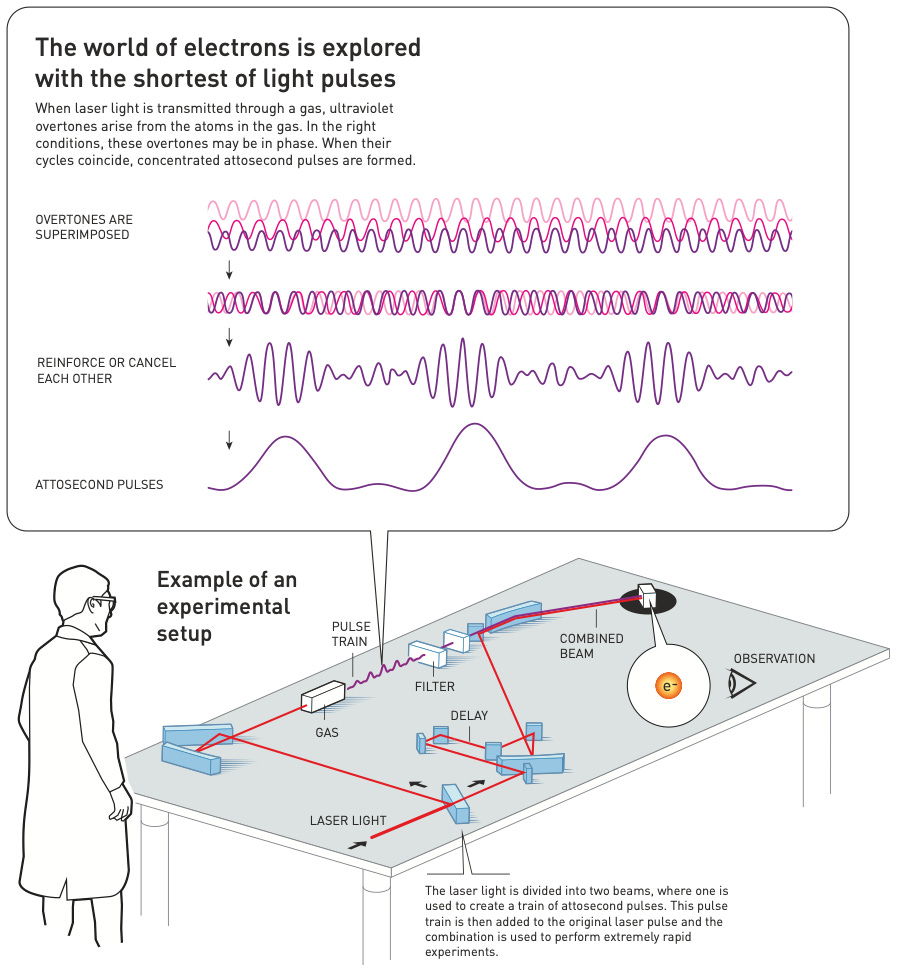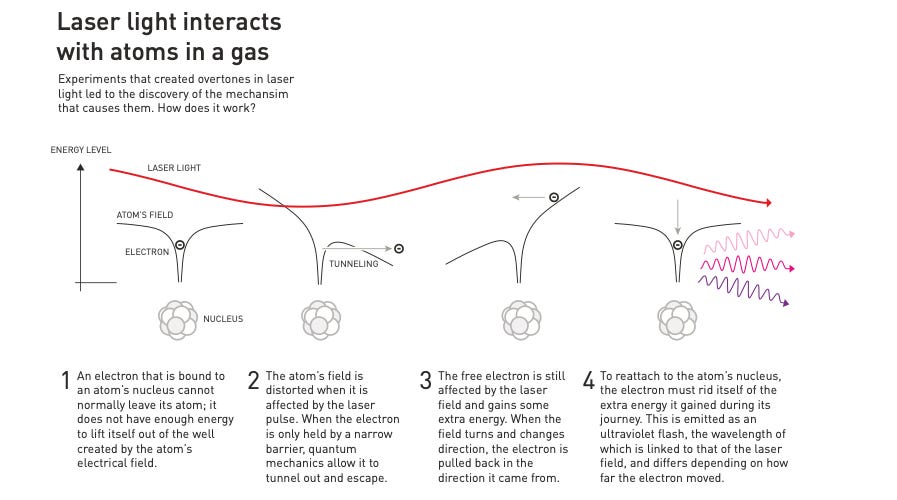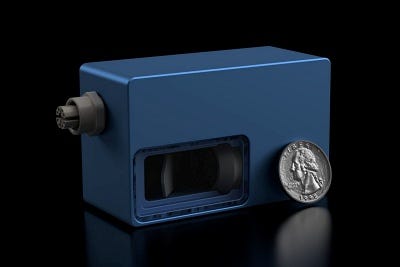January 2025: Margin Notes on Optics
Broken undersea cables, imaging electrons with attosecond pulses, affordable lidar for automotive, peacock-inspired semiconductor lasers that cut steel, and powering military operations with optics.
I've been fascinated by optics of late. The thought of light carrying information is oddly mystical to me. I’m not entirely sure what makes it much more intriguing than radio waves or sound through air. Maybe it is attractive because you can actually see light, and imagine little bits of information flowing through them like muddy water through a pipe.
It could also be a result of my efforts to prepare for the upcoming SPIE Photonics West conference in San Francisco that I will be attending soon!
If you are going to be at the conference, it would be great to meet in person. I’m tentatively arranging a meetup in SF/Bay Area to see if people want to hang out and talk tech. Date and time: Friday, January 31, 2025, 6pm-8pm, Location: Somewhere in SF/Bay Area, TBD. Sign up using the button below, and let me know if you can attend.
Since I have been investigating the latest on-goings in the field of optics, this week’s post is a collection of interesting bits of optics-related technology that I looked into. The latter half of this post is for paid subscribers, so please consider upgrading. It supports my conference travel and the production of this newsletter.
For free subscribers:
Undersea cables + Satellite Lasers = A Better World
Studying Electron Dynamics with Attosecond Laser Optics
Voyant’s $1,500 ‘Carbon’ Lidar Module at CES
For paid subscribers:
PCSEL: The brightest semiconductor laser inspired by peacock feathers
POWER: DARPA’s wireless optical power transmission project
Read time: 13 minutes
Post image credit: IEEE Spectrum
Undersea cables + Satellite Lasers = A Better World
There are rumors that Meta is installing its own undersea optical fiber cable to move its data around the world, which makes sense if you consider that over 3 billion people in the world use Meta apps. Luckily, we are no strangers to underwater optical fiber systems.
There are currently 1.2 million kilometers and over 500 undersea cables that are responsible for 95% of all internet traffic and trillions of dollars of financial transactions. If you think these cables are buried deep in the sea floor, you'd be wrong. These fragile and critical pieces of the world's infrastructure are just sitting there on the sea bed with the diameter of a large garden hose, which makes them extremely vulnerable to sabotage, accidents and the curiosity of marine creatures. These cables get cut over a 100 times each year, and costs millions of dollars and specialized equipment to repair.
Take for example, when the Houthi militants in the Red Sea recently attacked the cargo ship Rubymar, the ship dragged its anchor for 70 kilometers before finally sinking. The problem is that it destroyed three critical fiber optic cables in the process. In November of last year, two undersea cables in the Baltic Sea were also destroyed cutting off communications between several European nations. It’s only January 2025, and there is already a damaged undersea cable off the coast of Taiwan.
NATO, recognizing the need for redundancy of critical communication links is running a pilot project called HEIST, a hybrid approach of using optical cables with satellite communications as failover. The idea is that when undersea cables fail, the connection is rerouted via satellites to avoid disruption.
To ensure that the satellite route provides high data throughput, HEIST is likely to use free-space optical communications. In other words, connect satellites and ground stations via laser links. This is different from the direct to cellular (D2C) satellite service that Starlink is advertising which uses microwave frequencies and has a much lower speed communication link. D2C communications need to reuse existing mobile hardware, so the end goal differs from what HEIST is looking to do.
In 2023, NASA and MIT Lincoln Labs demonstrated the fastest ever free-space laser link from satellite to ground, achieving a throughput of 200 Gbps. The link was achieved with the TeraByte InfraRed Delivery (TBIRD) system. The whole communications unit is the size of a tissue box and is launched into orbit atop a 6U CubeSat, which makes this an economical way to setup space-to-ground laser links. This is still a far cry from what subsea cables are capable of in terms of throughput. The Google Dunante subsea cable has demonstrated a throughput of 250 Tbps across the Atlantic (that’s three orders of magnitude faster) which is useless if they get cut. Laser links albeit easily affected by environmental factors and being inherently slower are the first step towards providing some level of redundancy to undersea communication systems.
Studying Electron Dynamics with Attosecond Laser Optics
The 2023 Nobel Prize in Physics was awarded to Pierre Agostini, Ferenc Krausz, and Anne L’Huillier for “Experimental methods that generate attosecond pulses of light for the study of electron dynamics in matter.”
In the Bohr model of the atom, electrons are in orbits around the nucleus and are described by their position and period of revolution. Werner Heisenberg (famous for his Uncertainty Principle) disliked the use of such these quantities could not be measured, instead opting for quantum mechanical descriptions. Had attosecond (10^-18 seconds) spectroscopy been available in 1925, he might have changed his mind, because we can now observe electron behavior within atoms and molecules.
Think of camera photography. To capture a video of a moving bullet, we need to capture a large number of images every second to track its motion through space. This is what attosecond laser pulses can do for the motion of electrons. To describe how short an attosecond is — an attosecond is to a second, as the second is to the age of the universe. It is an incredibly short duration.
For the longest time, the shortest laser pulses that could be generated were limited to about 6 femtoseconds. A femtosecond is a thousand attoseconds. That was until 1987, when Anne L’Huillier and her colleagues used a powerful Nd:YAG (neodymium-doped Yttrium Aluminum Garnet) laser at 1064 nm to shine light through a noble gas. What they observed higher harmonic overtones to the fundamental wavelength that interfered with each other to generate attosecond pulses.
Why are these overtones created? When high powered light travels through a gas, it shakes the electrons loose from the electric fields that keep it bound to the atom. Now the loose electrons are still subject to the high electromagnetic field from the laser light. They gain kinetic energy that is proportional to the product of laser intensity and wavelength — a quantity called pondermotive potential. When the electron reattaches to the original atom, it does so with a lot of extra energy that it releases as overtones of light.
Studying atomic structures at these time scales has important implications. They allow researchers to study physical effects such as photoelectric emission, electron scattering and complex electron interactions in solids. Experimental understanding of atomic interactions could pave the way for future breakthroughs in the physical and biological sciences.
(via The Royal Swedish Academy of Sciences)
Voyant’s $1,500 ‘Carbon’ Lidar Module
One of the big hurdles in self-driving cars traditionally is the high cost of lidar sensors, which has led to car manufacturers like Tesla and XPeng to adopt a camera-only approach. The camera-only approach versus a hybrid camera+lidar approach has been hotly debated, with Elon Musk claiming that auto makers adopting for lidar are doomed. But advances in lidar technology have been lowering the cost of lidar sensors.
If you look closely at how lidar is used in cars, direct time-of-flight (dToF) lidar sensors have been the primary technology of choice due to their simplicity and lower cost. They operate by emitting laser pulses and mapping the surroundings by measuring the time taken for the reflected signal to arrive. But frequency modulated continuous wave (FMCW) lidars are much more accurate and are capable of extracting distance, speed and angle simultaneously. The downside is higher cost, because it requires the use of modulated laser sources and much higher levels of data processing.
New York based startup Voyant announced its $1,500 ‘Carbon’ FMCW lidar in CES 2025, held in Las Vegas this month. Compared to dToF sensors, FMCW methods provide better performance in low visibility conditions, and is also less immune to interference from sunlight at dawn and dusk. In addition, they also prevent ‘blooming’ of the detected image due to retroreflector surfaces such as traffic cones and road signs.
Voyant’s lidar-on-a-chip also provides optical beam steering which has been the mainstay of companies such as Analog Photonics, while using a moving mirror to provide a wider field of view. It has a maximum detection range of 130 meters, a detection velocity of about 140 mph, a 45° vertical and 90° horizontal field of view. Voyant’s next-gen product - the ‘Titanium’ - is focused on providing superior ADAS performance with 500 meters of distance ranging, and a much wider field of view.
PCSEL: The Brightest Semiconductor Laser Ever
Here is a 30 second YouTube video of cutting steel with a laser, and we will explain why it’s important and how it relates to peacock feathers.

